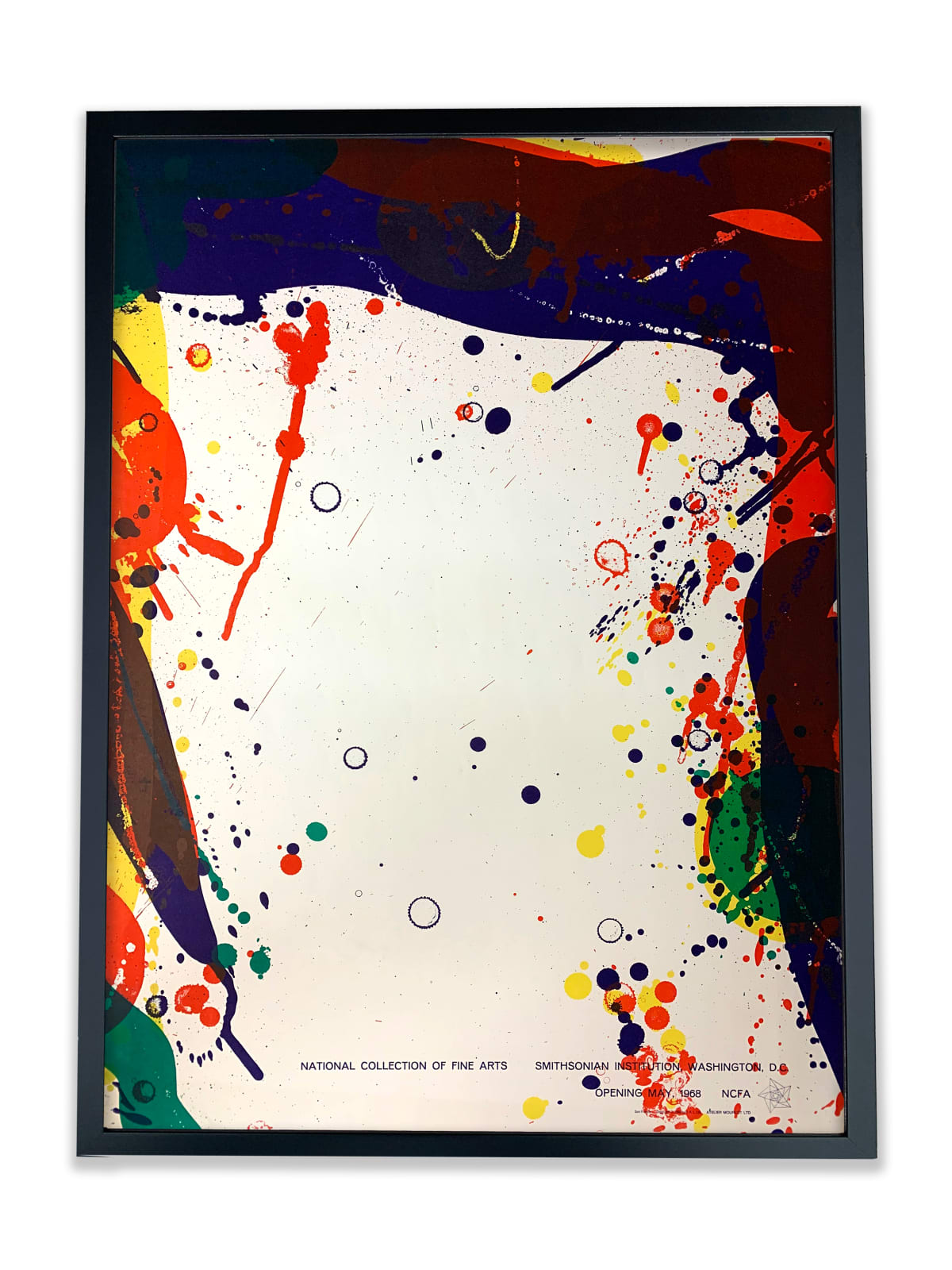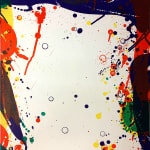Sam Francis
National Collection of Fine Arts - Smithsonian Institution, Washington, 1968
Colour lithograph
Framed
Framed
92cm x 70cm
Our “Modern Prints”, in the majority of cases, are posters designed by artists with the intention to advertise their exhibitions. These posters are based on an original draft by the...
Our “Modern Prints”, in the majority of cases, are posters designed by artists with the intention to advertise their exhibitions. These posters are based on an original draft by the artist. The dates printed relate to the date of the poster’s original production. In many cases the lettering was also designed by the artist.
National Collection of Fine Arts, Smithsonian Institution, Washington, D.C. / Opening May, 1968
Sam Francis, American, 1923 - 1994. Printed by Atelier Mourlot, Ltd., New York, 1967 - 1969.
Made in New York, New York, United States, North and Central America
1968
Image and sheet: 96.5cm x 70cm
Accession Number:
1968-136-20
Credit Line:
Gift of John Canaday, 1968
American abstract painter Sam Francis is considered one of the twentieth century’s leading interpreters of light and color. Best known for wild splatters of jaunty color, his career spanned a wide range of styles beginning in the early 1950s with monochrome canvases of dripping, biomorphic brush strokes influenced by the California Bay Area Modernism. When he moved to Paris in 1950 to study at Fernand Leger's private academy he became associated with the French Expressionist Taschisme and Art Informal movements, focused on the absence of premeditated structure, conception or approach.
There, and across Europe, he achieved fame for his Blue Ball series, where he translated his cell shapes into large, amorphous circles of blue paint. Executed while hospitalized for renal tuberculosis, the forms can be interpreted as embodiments of the pain and dysfunction of his kidneys, or the discoloration and enlargement of his testicles, all side effects of his illness. In these works the pictorial activity is pulled to the edges, leaving much of the surface of the canvas open, a style he expanded after traveling to Japan. Exploring the philosophical idea of negative space, these Edge paintings feature a central white void of unpainted canvas or empty areas, outlining rectangles or other shapes. They perhaps best exemplify his conviction that, “Painting is about the beauty of space and the power of containment.”
Sam Francis has been the subject of dozens exhibitions at institutions that include the Pasadena Art Museum, Houston’s Museum of Fine Arts, Centre national d'art contemporain, Fondation Rothschild in Paris, Whitney Museum of American Art, Boston’s Institute of Contemporary Art, and Museum of Modern Art in Toyama, Japan. He was included in “12 Americans” (1956) at the Museum of Modern Art in New York and in the 1964 Documenta in Kassel.
National Collection of Fine Arts, Smithsonian Institution, Washington, D.C. / Opening May, 1968
Sam Francis, American, 1923 - 1994. Printed by Atelier Mourlot, Ltd., New York, 1967 - 1969.
Made in New York, New York, United States, North and Central America
1968
Image and sheet: 96.5cm x 70cm
Accession Number:
1968-136-20
Credit Line:
Gift of John Canaday, 1968
American abstract painter Sam Francis is considered one of the twentieth century’s leading interpreters of light and color. Best known for wild splatters of jaunty color, his career spanned a wide range of styles beginning in the early 1950s with monochrome canvases of dripping, biomorphic brush strokes influenced by the California Bay Area Modernism. When he moved to Paris in 1950 to study at Fernand Leger's private academy he became associated with the French Expressionist Taschisme and Art Informal movements, focused on the absence of premeditated structure, conception or approach.
There, and across Europe, he achieved fame for his Blue Ball series, where he translated his cell shapes into large, amorphous circles of blue paint. Executed while hospitalized for renal tuberculosis, the forms can be interpreted as embodiments of the pain and dysfunction of his kidneys, or the discoloration and enlargement of his testicles, all side effects of his illness. In these works the pictorial activity is pulled to the edges, leaving much of the surface of the canvas open, a style he expanded after traveling to Japan. Exploring the philosophical idea of negative space, these Edge paintings feature a central white void of unpainted canvas or empty areas, outlining rectangles or other shapes. They perhaps best exemplify his conviction that, “Painting is about the beauty of space and the power of containment.”
Sam Francis has been the subject of dozens exhibitions at institutions that include the Pasadena Art Museum, Houston’s Museum of Fine Arts, Centre national d'art contemporain, Fondation Rothschild in Paris, Whitney Museum of American Art, Boston’s Institute of Contemporary Art, and Museum of Modern Art in Toyama, Japan. He was included in “12 Americans” (1956) at the Museum of Modern Art in New York and in the 1964 Documenta in Kassel.




